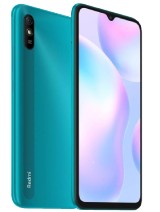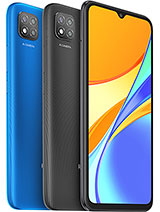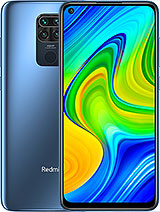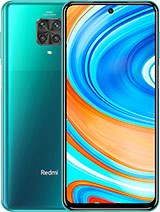Redmi Note 9 vs Note 9S vs Note 9 Pro DIFFERENCES EXPLAINED By TechwithUsama
This is the Redmi Note 9? This is the Redmi Note 9 pro, and this is the Redmi Note: 9s wait, I'm not sure which phone I'm holding okay. So this is the Redmi Note 9s, and this is the Redmi Note 9 pro. These phones are too much similar that it's really difficult to tell these phones apart. One thing that I don't like about Redmi: that is, how the company names its smartphones at first, the company releases, so many variants of one same smartphone, and then it names it differently for each region. It all makes picking the right version a lot difficult. The same has happened for the Redmi Note, 9 series 2, and in this video we will clear out all these confusions.
Let's talk about the very first differences between all these three phones. Redmi Note 9 is built out of plastic. It has the gorilla glass 5 on the front. Only the remaining phone feels very cheap in its plastic wheel, Redmi Note, 9s and 9 pro are built out of glass. Both phones have the gorilla glass 5 protection on the front and at the back as well.
The second big differences between these phones is off the charger. Redmi Note 9 and note 9s come with an 18 watt, fast charger. The 9 pro comes with a 30 watt, fast charger. The chargers also differ when it comes to the weight. For example, the Redmi Note 9 pros 30 watt charging brick is the heaviest one with over 80 grams, while the 18 watt chargers of the note, 9 and 9s weigh at about 63 grams.
Only all these three phones also have a different weight. The Redmi Note 9 being a plastic phone weighs at about 201 grams Redmi. Note 9s weighs at about two 11 grams, which is close to Redmi Note 8 pro and the Redmi Note 9 pro being the heaviest one among all weighs at about 213 grams. The Redmi Note 9 has its fingerprint scanner underneath the camera cutout and its led flash is towards the top right side of the camera module. Other two models have their fingerprint scanner embedded right inside the power button.
When we look at these phones from the front, the 9s and the 9 pro are almost identical, while the Redmi Note 9 differentiates because of its dot drop placement. The Redmi Note 9 has a camera cut out towards the top left corner of the screen. This one is using a 6.53 inches IPS LCD panel, which produces a brightness of 450 nits, but it does not offer HDR. Both the Redmi Note, 9s and 9 pro have a 6.67 inches IPS LCD panel with the camera placed right in the middle. Now this screen on these phones comes with HDR support, while the brightness on this display is also up to 450 nits.
Now that we are talking about the camera cutout and the display, let's talk about the front camera as well. Redmi Note 9 has a 13 megapixel shooter on the front, while the note 9s and 9 pro have a 16 megapixel camera on the front. When it comes to the rear cameras, all three phones differ. The Redmi Note 9 has a 48 megapixels main camera. I suspect this to be a Samsung gm2 sensor, but I am not sure about this.
This phone further has an 8 megapixels ultra-wide, a 2 megapixel depth and a 2 megapixels macro camera. The Redmi Note 9s has the same 48 megapixels main camera, but this phone has a better 5 megapixels macro and 5 megapixel depth camera the Redmi Note 9 pro is superior when it comes to the cameras. This handset has main 64, megapixel, Samsung, gw1 sensor and 8 megapixels ultrawide camera, a 5, megapixels depth camera and a 5 megapixels macro camera. Now the camera features also vary among all these phones. For example, the Redmi Note 9 cannot shoot super slo-mo videos, the Redmi Note 9 does not offer 1080p at 60 frames per second or 4k at 30 frames per second.
On the other hand, the Redmi Note 9s and the note 9 pro can shoot super slo-mo at 960 frames per second to 40 frames per second and 120 frames per second. Both these phones shoot 4k at 30 frames per second, and they can also shoot 1080p at 60 frames per second. Now. All three phones do not have optical image stabilization. However, these phones do support the electronic image stabilization.
While the Redmi Note 9 runs on the MediaTek hello g85 CPU, coupled with a ram of 4 gigabytes, the Redmi Note, 9s and 9 pro are powered by Qualcomm snapdragon 720 g, which is coupled with a ram of 6 gigabytes. All phones are available in 128, gigabyte, internal storage variant, the Redmi Note, 9s and 9 pro have the UFS 2.1 storage chip, and it's not the same. On the Redmi Note.9. all phones run on the android 10 with the mini 11 out of the box. The color options also vary for each phone.
For instance, the Redmi Note 9 comes in 4s green midnight, gray, polar white, while the Redmi Note 9s is available in the glacier white aurora, blue and interstellar gray colors, the Redmi Note 9 pro is being offered in the tropical green glacier white and interstellar gray colors. Now the Redmi Note 9 pro in the tropical green color, has a slightly different design. I am not sure if that is a design flaw or the Redmi has done that intentionally, because the design of the tropical green Redmi Note 9 pro does not match the picture on the box, for example, the Redmi Note 9 pro that you are looking at right now has the 64 megapixels mentioned right underneath its camera, while this entire 64 megapixels black bar is missing on the tropical green Redmi Note 9 pro also the tropical green Redmi Note 9 pro has a dual tone: color at its back. It's particularly happening with the tropical green variant of the Redmi Note 9 pro only glacier white and the interstellar gray are similar to what you are looking at right now. The price difference between these phones is minor and so are the differences.
All phones, in my opinion, are a great value for money. You will actually not regret picking any one of these. There is another variant of this phone which is not being offered in so many regions. That is the Redmi Note 9 pro max, but just in case you are still confused. The Redmi Note 9 pro max is the upper end variant of this series and that phone is powered by the Qualcomm snapdragon 730g chipset.
So that is a lot more different from the phone set. You are looking at right now. I hope everything is clear as crystal now, if you are still having any further confusions drop. Your question in the comment section down below also make sure to drop your feedback below as well subscribe and like this video, if you found it useful with that said, I will sign off and see you in the next one.
Source : TechwithUsama





























